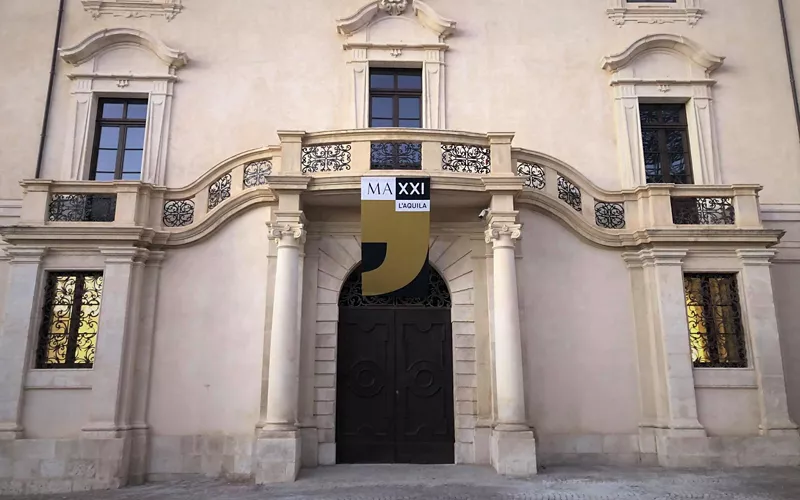This content was automatically translated. View the original text.

Overview
The MAXXI in L'Aquila: a crossroads of contemporary cultures
Never call it a branch: inaugurated on 3 June 2021, MAXXI L'Aquila is indeed the second headquarters of the National Museum of 21st Century Arts in Rome, but it is much more than a branch.
The idea for the museum is very recent: it was born in 2014, after the Minister of Culture Dario Franceschini visited Palazzo Ardinghelli, which had been severely damaged by the earthquake of 6 April 2009. Following restoration and a series of works, this 18th-century building was adapted to house the new museum dedicated to21st-century art, architecture and photography.
A symbol of renewal
The Maxxi L'Aquila is located in Piazza Santa Maria in Paganica, in the historical centre, and stands as an important sign for the entire city that still bears the scars of the earthquake of 6 April 2009.
The ambitious project aims to turn this museum hub into a crossroads of communication, encounters and collaboration between several contemporary expressive languages, and also between all those working in the art world, from galleries to foundations, from research institutes to other museums, so that all the leading organisations, both national and international, may have a voice.
A meeting place, in short, modelled on the MAXXI in Rome, where visual arts, photography, architecture and performance art dialogue with each other.
Palazzo Ardinghelli: a National Monument
The halls of MAXXI L'Aquila alone are worth a visit.
Palazzo Ardinghelli, in fact, was among the first historical buildings in the city to be built after the 1703 earthquake, thanks to the family whose name it still bears today. Erected on a palace of Renaissance origin and completed in 1743, today it has a late Baroque facade due to later reconstructions: it was only finished in 1955 and makes the building one of the finest examples of L'Aquila Baroque.
The element that characterises the architecture, together with the façade, is the courtyard, from which a monumental staircase of Borrominian derivation originates, frescoed by the Venetian Vincenzo Damini in 1749. The inner courtyard, which runs through the building between Piazza Santa Maria in Paganica and Via Giuseppe Garibaldi, makes the museum a public space available to the city.
In 1902, the Palace was declared a National Monument. In front stands the church of Santa Maria Paganica, which gives its name to the square of the same name.
A museum in flux
MAXXI L'Aquila, at least for the moment, does not have a permanent collection, but is often the venue for workshops, talks, in-depth activities and educational projects that allow for a continuous and lively exchange with the local area, but also with anyone who happens to visit it. A real museum in the making, where nothing is static but the result of constant, ongoing interactions between artists and visitors.
If you are passing through L'Aquila, make sure to drop in: at any time of year you will find something worth seeing.
MAXXI L'Aquila is open on Thursdays from 16:00 to 20:00 and from Friday to Sunday from 11:00 to 19:00. Keep an eye on the official website to check out special openings and events not to be missed.
Find out more
Piazza Santa Maria Paganica, 15, 67100 L'Aquila AQ, Italia